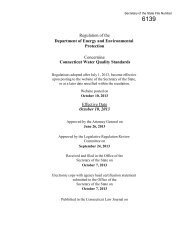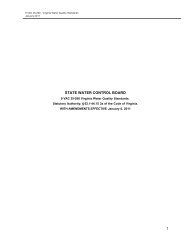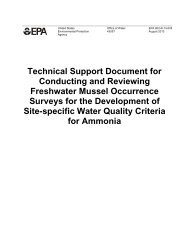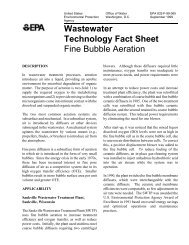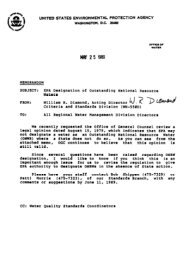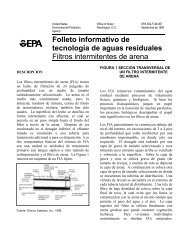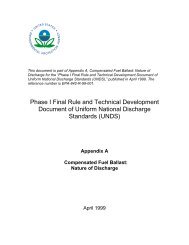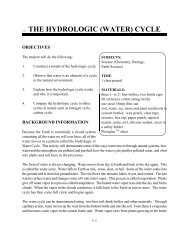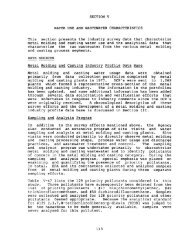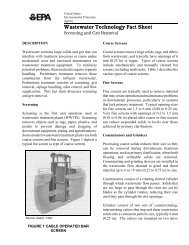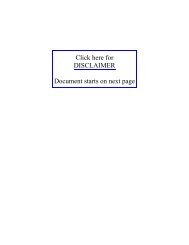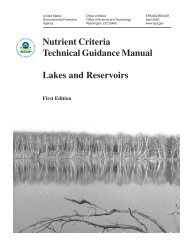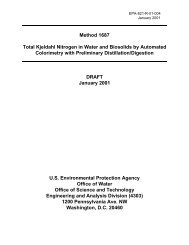Method 300.0, Rev. 2.1 - Water - US Environmental Protection Agency
Method 300.0, Rev. 2.1 - Water - US Environmental Protection Agency
Method 300.0, Rev. 2.1 - Water - US Environmental Protection Agency
Create successful ePaper yourself
Turn your PDF publications into a flip-book with our unique Google optimized e-Paper software.
(6)<br />
to three times the estimated instrument detection limit. To determine<br />
MDL values, take seven replicate aliquots of the fortified reagent water<br />
and process through the entire analytical method. Perform all<br />
calculations defined in the method and report the concentration values<br />
in the appropriate units. Calculate the MDL as follows:<br />
where, t = Student's t value for a 99% confidence level<br />
and a standard deviation estimate with n-1<br />
degrees of freedom [t= 3.14 for seven replicates]<br />
S = standard deviation of the replicate analyses<br />
MDLs should be determined every six months, when a new operator<br />
begins work or whenever there is a significant change in the<br />
background or instrument response.<br />
9.3 ASSESSING LABORATORY PERFORMANCE<br />
9.3.1 Laboratory Reagent Blank (LRB) -- The laboratory must analyze at least<br />
one LRB with each batch of samples. Data produced are used to assess<br />
contamination from the laboratory environment. Values that exceed the<br />
MDL indicate laboratory or reagent contamination should be suspected<br />
and corrective actions must be taken before continuing the analysis.<br />
9.3.2 Laboratory Fortified Blank (LFB) -- The laboratory must analyze at least<br />
one LFB with each batch of samples. Calculate accuracy as percent<br />
recovery (Section 9.4.2). If the recovery of any analyte falls outside the<br />
required control limits of 90-110%, that analyte is judged out of control,<br />
and the source of the problem should be identified and resolved before<br />
continuing analyses.<br />
9.3.3 The laboratory must use LFB analyses data to assess laboratory<br />
performance against the required control limits of 90-110%. When<br />
sufficient internal performance data become available (usually a<br />
minimum of 20-30 analyses), optional control limits can be developed<br />
from the percent mean recovery (x) and the standard deviation (S) of<br />
the mean recovery. These data can be used to establish the upper and<br />
lower control limits as follows:<br />
UPPER CONTROL LIMIT = x + 3S<br />
LOWER CONTROL LIMIT = x - 3S<br />
The optional control limits must be equal to or better than the required<br />
control limits of 90-110%. After each five to 10 new recovery<br />
measurements, new control limits can be calculated using only the most<br />
recent 20-30 data points. Also, the standard deviation (S) data should



